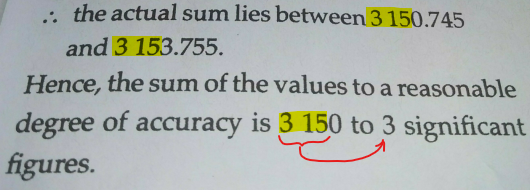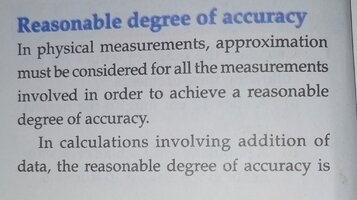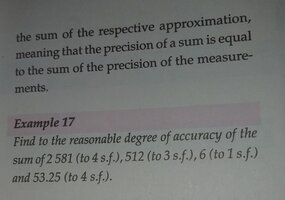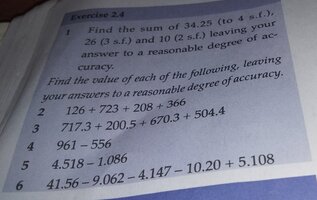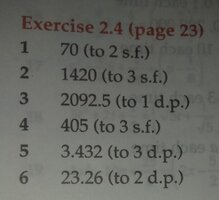Please help take a look at the following:
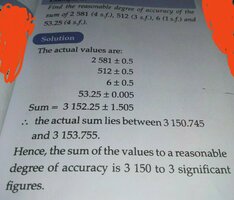
The sum of the values to reasonable degree of accuracy is either 3 150.745 or 3 153.755. If you take the mean, you have
[math]\frac{ 3150.745 + 3153.755 }{ 2 }= 3152.25[/math]It is stated the the sum to reasonable degree of accuracy is 3 150 to 3 sig figs. My question is how do I know the number of sig figs to round the value, if am not instructed.
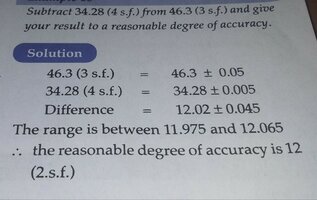
The same question apply here. Is there a rule guiding the value to a reasonable degree to a number of sig figs?

The sum of the values to reasonable degree of accuracy is either 3 150.745 or 3 153.755. If you take the mean, you have
[math]\frac{ 3150.745 + 3153.755 }{ 2 }= 3152.25[/math]It is stated the the sum to reasonable degree of accuracy is 3 150 to 3 sig figs. My question is how do I know the number of sig figs to round the value, if am not instructed.

The same question apply here. Is there a rule guiding the value to a reasonable degree to a number of sig figs?

